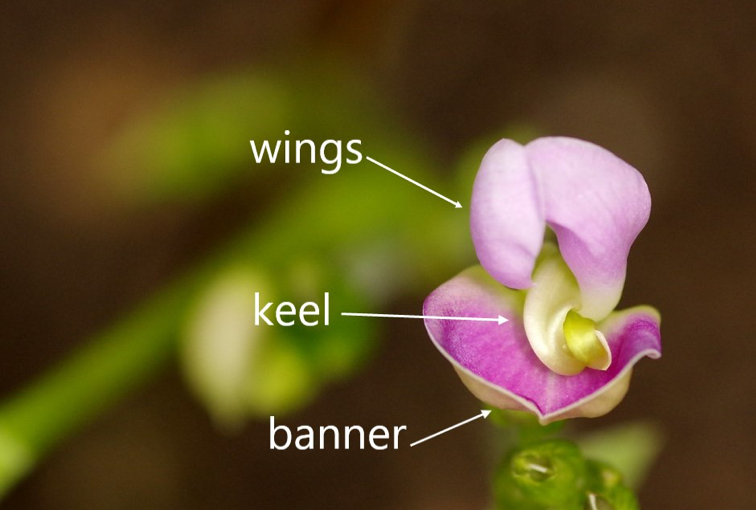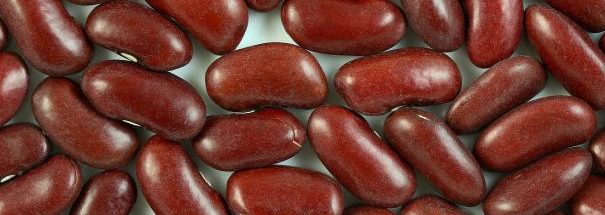September: Phaseolus vulgaris -The Common Bean!
The common bean (Phaseolus vulgaris) is an annual plant, with a distinctive irregular flower form constructed of five petals, also known as the banner, wings, and keel (see below picture for flower structure). Bean plants are classified in the Legume Family or Fabaceae, which is currently the third-largest plant family after the Orchid and Aster families (Elpel 2018:79). Three identifying characteristics for this plant family include: (1) pea-like pods, (2) leaves often with a plume-like (pinnate) form, and (3) five flower petals consisting of a banner, wings, and keel petal arrangement.

Base photo: “Phaseolus vulgaris” by Dingilingi
The genus Phaseolus has a variety of species native to every continent, except Antarctica, but this particular species of vulgaris is native to the Americas; people living in the Andes and Mesoamerica domesticated wild vulgaris as early as 8000 years ago. Phaseolus vulgaris or the common bean made its way north to the American Southwest around 3000 years ago and was carried to Eastern North America around 800 years ago. By approximately 700 years ago, Native American farmers in Tennessee added beans to their agricultural fields. Historically known as “The Three Sisters”, maize (corn), squash, and beans are companion plants: beans climb up the maize stalks and add nitrogen to the soil for the other plants, and squash leaves spread along the ground, providing shade that keeps in moisture and thwarts weeds and pests.
Beans have been used historically for a variety of culinary dishes, but were stereotypically given a reputation as “poor people’s food”. Prior to the Civil War, they were often cultivated by Southern planters as rations for enslaved people (Miller 2013:114). Today, dried beans still provide a cheap option for meals, but overall beans of all varieties have emerged as a staple culinary ingredient for Southern cuisine.
For more information:
Covey, Herbert C.
African American Slave Medicine: Herbal and Non-Herbal Treatments. Rowman & Littlefield Publishers, Inc., Lanham, Maryland. 2007.
Edge, John T. (Ed.)
The New Encyclopedia of Southern Culture: Volume 7: Foodways. University of North Carolina Press. Chapel Hill, North Carolina. 2007.
Elpel, Thomas J.
Botany in a Day: The Patterns Method of Plant Identification 6th ed. HOPS Press, LLC. Pony, Montana. 2018.
Fernald, Merritt and Alfred Kinsey
Edible Wild Plants of Eastern North America. Harper & Row Publishers Inc. New York City, New York. 1943.
Miller, Adrian
Soul Food: The Surprising Story of an American Cuisine One Plate at a Time. The University of North Carolina Press. Chapel Hill, North Carolina. 2013.
